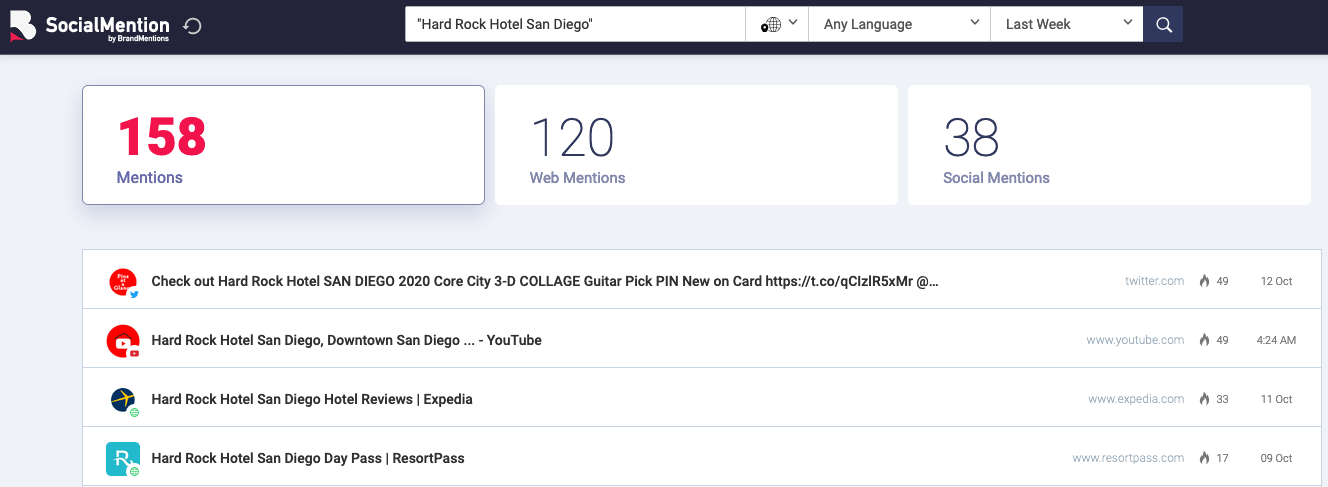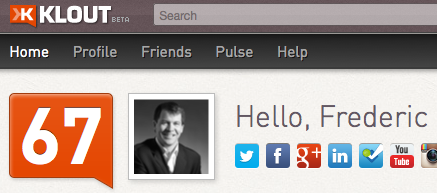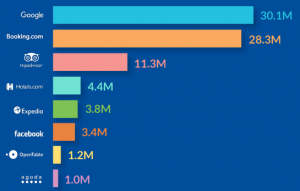In preparation for two keynote sessions I will be giving shortly during the month of February, I was asked to address some of the ways brands can effectively manage their online presence. In the travel industry, for example, more and more brands understand the need to monitor and respond to comments on Tripadvisor, yet only 32% actively manage their page, answer comments or upload photos and relevant bio details about their venue or attraction.
But claiming your venue and managing reviews on Google Places, Foursquare, Tripadvisor or Yelp is only one aspect of managing a brand’s e-reputation. Here are seven steps that should help companies managing their online presence, whether it’s a multinational brand or a mom & pop shop!
1. WHAT PEOPLE ARE SAYING ABOUT YOUR BRAND
There are numerous free tools allowing you to discover what people are saying about you and your brand on social media, forums or blogs. One of my favorites is Social Mention, which lists mentions about your brand but also provides information about sentiment, i.e. positive, negative, neutral. I also like the fact we can see keywords used, users who mention the brand, on which platform, and so on.

Other free tools worth your while are Topsy, as well as Google services such as Google News and Google Alerts. If you use a social media dashboard such as Hootsuite, SproutSocial, SocialBro or TweetDeck, they are also useful to monitor conversations about a brand, assuming you set up streams and filters relevant to your company and industry.
2. INVEST IN KEYWORDS & SEO
If you did your due diligence in step one, you ought to know what are the keywords people and customers use in order to find you, your brand or your competitors. A strong content marketing strategy stems from knowing the right triggers in your target audience’s mind, in order for you to fulfill their needs and wants with pertinent information.
Assuming these keywords and information are aligned with your product and services, you must ensure content is formulated with this in mind across all communication channels, offline and online, including web sites, newsletters, blog, social media, press releases, etc. Search engine optimization (SEO) thus becomes more accurate and relevant, and will segue into more efficient search engine marketing (SEM).
From a marketing stand point, you can access this kind of information as well as your competitors’ to better understand which keywords are generating web traffic and on which keywords you may want to invest in AdWords campaigns.
The best place to start is by looking at your own web site analytics, i.e. with Google Analytics, or with sites such as compete.com or alexa.com. In this example, you can see keywords that would be relevant for the Westin San Francisco:

Staying sharp on this front ensures you know who, when and what is being searched regarding your property or destination. This is also an important component of managing your online reputation.
3. IDENTIFY AND ENGAGE INFLUENCERS
 Imagine Lady Gaga or some celebrity mentioning your product or service, raving about it to its millions of followers. How cool would that be, right? But turn it around, and what happens if a known influencer rips your property or destination apart on his or her blog, mentioning the horrible service received and vowing never to return?
Imagine Lady Gaga or some celebrity mentioning your product or service, raving about it to its millions of followers. How cool would that be, right? But turn it around, and what happens if a known influencer rips your property or destination apart on his or her blog, mentioning the horrible service received and vowing never to return?
While these extreme situations don’t happen that often, there are people raving or trashing your brand on a daily basis on the blogosphere and social media. You can’t monitor it all, but you certainly want to address those who have the biggest potential for ripple effects and multiplication.
The field of “influence marketing” is still nascent, yet there are three important players that claim to evaluate your influence online: Klout, Kred and PeerIndex. There are various opinions on how precise these influence scores really are, and to what extent one should give any of these indicators credit, but whatever tool you use, you do need to unravel who are the people you want to have on your side as brand loyalists to spread the good word.
Once you know who are the folks that you really should connect with in your town, your industry or your field of expertise, then you can engage with them. Not promote or push your promotions down their throat. Engage.
This can happen through various Twitter chats or perhaps even on Facebook, but the two best places in my opinion are via Linkedin Groups and Google+ communities. Like-minded people share questions, answers, comments and opinions according to groups and communities, which represents a great opportunity to meet folks that can later on turn into friends, clients and brand advocates.
4. STRATEGIC ONGOING MONITORING
What you did in Step 1, you basically need to continue doing on an ongoing basis. This is akin to the rinse & repeat formula! In order to be more strategic in your approach, you may want to consider more sophisticated tools, such as Radian6, Sysomos, Beehive and other premium platforms that monitor not only conversations online but also sentiment, in much more detailed ways than free tools can allow.
Doing this can help identifying shifts in popular sentiment about your brand, allowing you to be proactive with the situation at hand rather than reacting once it’s too late.
 Being strategic also means identifying platforms that are essential in your brand reputation management. While Facebook is the king of social media right now, it may not be where most of your efforts should go if it’s not where your clients are or where they choose to engage with you.
Being strategic also means identifying platforms that are essential in your brand reputation management. While Facebook is the king of social media right now, it may not be where most of your efforts should go if it’s not where your clients are or where they choose to engage with you.
If you are a hotel, you will want to monitor and respond to comments made on Tripadvisor, Bookings.com or Google Places. As a restaurant owner, you would keep a close eye on Yelp, OpenTable or FoodSpotting.
5. CREATE A MULTI-PLATFORM CONTENT CALENDAR
Having an editorial calendar is one of the golden rules in content marketing, yet one common mistake made by organizations is to deal with tactics in isolation, regardless of what may be happening in other departments of the organization or with external parties.
A multi-platform content calendar thus should stem from business objectives on a yearly basis, and highlight strategies in key departments (Sales, Marketing, Communications, Public Affairs, Human Resources, Customer Service) and tactics employed, offline and online.
Having this long-term, holistic view helps prevent situations such as Qantas airlines’ #QantasLuxury campaign fail in 2011. We are all too familiar with the “left hand not knowing what the right hand is doing” syndrom, but having tools like a multi-platform content calendar in place, along with regular cross-functional team meetings, can address potential public mishaps like McDonald’s #McDStories or Wendy’s #HeresTheBeef. (Click here for more on these)
6. INVOLVE EMPLOYEES AND BRAND EVANGELISTS
 Having a thriving community online, whether it’s on Facebook, Twitter or Linkedin is great in many ways: it can help foster new ideas for product and service development, help with cross-promotion, retention and loyalty.
Having a thriving community online, whether it’s on Facebook, Twitter or Linkedin is great in many ways: it can help foster new ideas for product and service development, help with cross-promotion, retention and loyalty.
Brands who encourage employees to engage on social media, such as Zappos or Nordstrom, can also benefit from an extended reach and more diverse voice that helps “humanize” the brand and have more authentic conversations. Of course, this assumes you already have a clear social media policy in place or an organizational culture where social and transparency are ingrained with corporate genetics.
Having employees and brand evangelists you can count on is a distinct advantage if and when a crisis arises, as they can and will advocate in your favor, so you have an “army” of social collaborators to restate the facts, as a situation may require, on various platforms where your marketing or communications team alone could hardly outreach with equivalent efficiency.
7. EXPECT THE UNEXPECTED
Last but not least: be prepared! While it is technically impossible to expect the unexpected, you can at least prepare for a crisis situation. If you work in a ski resort, what happens if a gondola or chairlift falls, killing many people on the spot? These are hypothetical situations that resorts should already be prepared for, but now that news break on Twitter, with real-time photos taken via Instagram, how would you deal with it?
A crisis management strategy needs to be in place, along with running drills for hypothetical situations. Who’s in command? Who is the spokesperson? What content goes on social platforms, who is entitled to communicate, which channels are prioritized, etc. These questions can and should be identified before a situation occurs, so that when the unexpected happens, you will know what to do.
Has your experience been different and would you have other insights in managing a brand’s e-reputation? I would love to hear your feedback in the comment section below.










Leave a Reply